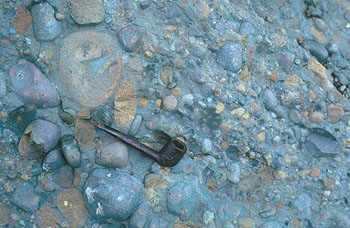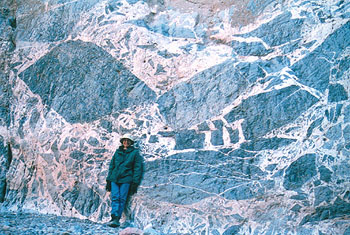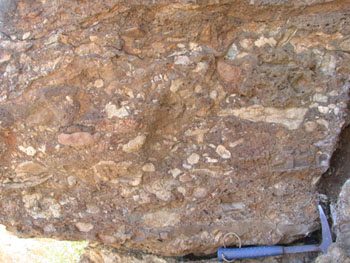Conglomerates and Breccias
A clastic rock made of particles larger than 2 mm in diameter is either a conglomerate or breccia. A conglomerate has rounded clasts while a breccia has angular clasts. Since water transport rapidly rounds large clasts, breccias normally indicate minimal transport. They commonly form as rock-fall and debris flow deposits along cliffs, and underground along faults or where caves collapse. Because water is ubiquitous on the Earth's surface, conglomerates are far more common than sedimentary breccias.
Click all photos to enlarge.
|
|
Large rounded clasts clearly make this a conglomerate.
When will pipe smoking come back in style?
Photo: Norris W. Jones
|

|
|
The angular clasts mark this as a breccia. In this case, the clasts are in fact limestone or dolomite, so this is a carbonate breccia.
Photo was taken on the surface of an alluvial fan near Resting Springs Pass, CA
|

|
|
The highly angular boulders and cobbles again indicate a breccia. Again, this is a limestone breccia. But in this case, the breccia probably formed along a fault or as the result of a cave roof falling in.
Death Valley, CA
|

|
|
This is another shot along the same canyon wall as shown above. It is a spectacular breccia. Some of these clasts are HUGE.
Death Valley, CA
|

|
|
This one is trickier. The clasts are clearly gravel to cobble sized, but are they angular or rounded? If you zoom in on the image, you will see that the edges of the clasts are rounded, so this counts as a conglomerate.
West of Pittsburgh, PA
|

|
|





